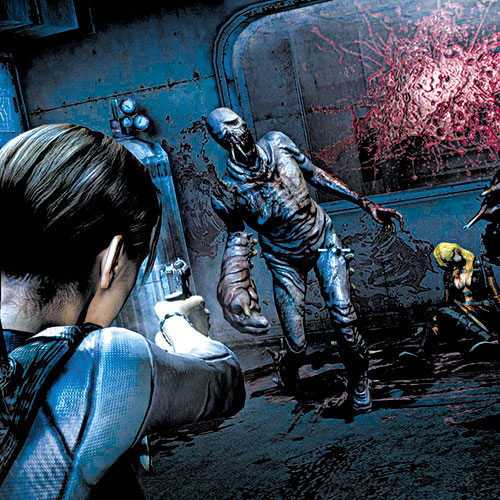Old School Feel of Previously Released Classic Never Felt So Good

BY BRITTANY VINCENT AND KEVIN TUCKER | SHACKNEWS.COM (TNS)
Platform: PlayStation 3 and 4, Nintendo 3DS, Xbox 360 and One, Wii U, Nintendo Switch, Microsoft Windows
Genre: Survival horror
Developer: Capcom, Tose
Rating: M, for mature audiences 17+
Are enhanced textures and new motion controls enough to bring an old 3DS series back from the grave?
Resident Evil has made its Nintendo Switch debut, and though that’s something we’d normally be very excited about, in this case the Switch’s reputation as a port machine is holding up true. Resident Evil Revelations, both games 1 and 2, are enhanced versions of the titles that landed on the Nintendo 3DS in 2012 (in the case of the original Revelations) and the episodic Revelations 2 adventures that graced various consoles 2015. And though they certainly look and play well enough, these aren’t modern Resident Evil games by any means. With that said, they do look and feel about as good as they ever have, and the Revelations Collection presents a bang-for-buck value that easily surpasses many other Nintendo Switch titles, ports or not.
The original Resident Evil Revelations hit the Nintendo 3DS scene way back in January of 2012. The game’s origins as a 3DS title do remain fairly obvious: it follows the same sort of over-the-shoulder third-person action that the series popularized back with the release of Resident Evil 4, and the game is broken up into bite-sized chunks that make it easier to digest on-the-go. The game even has short cut scenes before each chapter showing highlights of the previous chapter, meaning players won’t ever be struggling to remember where they stand in the overall narrative.
The Nintendo Switch versions of the games are enhanced with Switch-based motion controls: players can opt to use the system in Handheld mode or don disconnected Joy-Cons in order to aim their weapons simply by pointing the controller in the direction of enemies, much like the motion control used in The Legend of Zelda: Breath of the Wild. We found this method of aiming to be clumsy at best, however; aiming in either title is fairly imprecise perhaps out of design, and adding in the extra time needed to square up shots only seemed to make enemy encounters more frustrating.
The original Revelations follows two interconnected stories: the first sees series mainstay Jill Valentine and new partner Parker Luciani investigating the disappearance of BSAA members Chris Redfield and Jessica Sherawat on board the cruise ship Queen Zenobia out in the Mediterranean Sea. The other side of the tale follows staple Resident Evil protagonist Chris Redfield and partner Jessica Sherawat as they investigate what appears to be the return of Veltro, a terror organization that used genetically-modified creatures (i.e. classic Resident Evil bio-weapons) to wipe out an entire city. Players take control over both Chris and Jill at various points in the game, though the bulk of Revelations follows the perspective of Jill and her exploits aboard the cramped ocean liner.
The Queen Zenobia is one of most praiseworthy elements in the first Revelations. Queen Zenobia makes for an ideal survival horror set, being cramped, dark, hard to escape from, and home to loads of port holes and ventilation systems for monsters to slither out of. It keeps tension high, which is great for Jill’s story segments; however, the tension out at sea makes Chris’ more open-environment chapters feel substantially less tense.
Both titles in the Collection also offer access to the Raid gameplay mode, which presents a co-op experience not entirely unlike the Mercenaries gameplay mode that debuted in Resident Evil 5. Players can make their way through some of the game’s environments with a focus on killing enemies, collecting items, and racking up points. Even better, the Raid mode offers up its own individual progression system where players can gain experience and unlock various equipment and bonuses.











